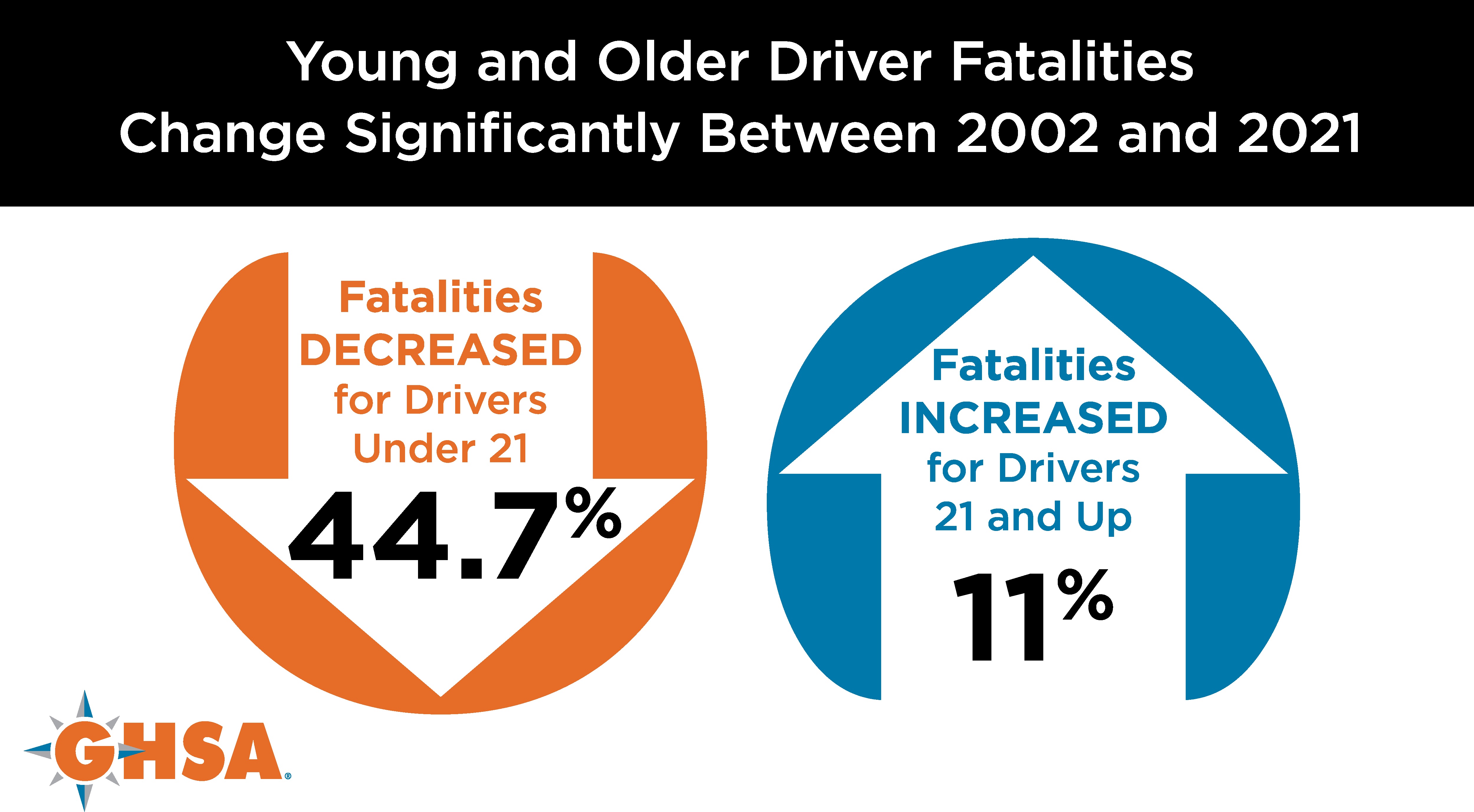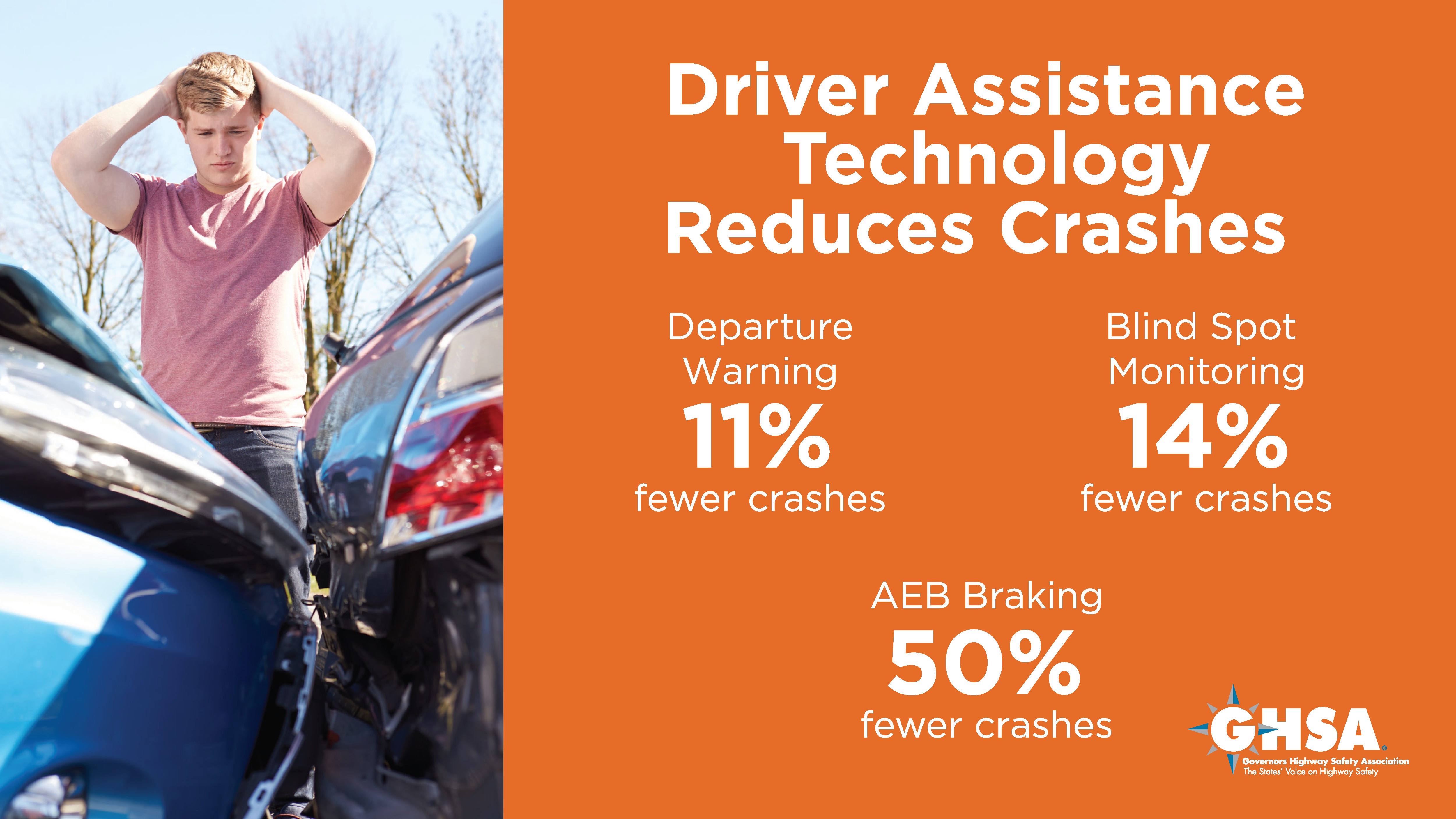
Young drivers are nearly four times more likely to be involved in a fatal traffic crash than their older counterparts, but a GHSA report confirms that crash and fatality rates for drivers under 21 have improved drastically over the past two decades – more so than for other drivers. The report includes an analysis of Fatality Analysis Reporting System data for 2002-2021, identifies the policies and programs responsible for the gains in teen driver safety and makes recommendations for building upon that success.
Over the past two decades, fatal crashes involving a young driver fell 38%, while they increased nearly 8% for drivers 21 and older. At the same time, deaths of young drivers fell about 45%, compared to an 11% increase in fatalities for older drivers. Young people are less likely to drive today than they were 20 years ago, but this accounts for only a small portion of the large decreases. Calculating fatal crashes per 10,000 licensed drivers shows the rate fell 34% for drivers under 21, compared to a 12% decrease for drivers 21 and older. The report also includes a state-by-state analysis that shows changes in the crash and fatality rates for young drivers vary substantially. Nationally, the young driver crash fatality rate improved in all but three states and the District of Columbia.
Where Do We Go From Here?
Safer teen drivers make our roads safer for everyone around them – especially people walking, biking, scooting or using other forms of non-motorized transportation. The GHSA report discusses five proven policies and programs that research confirms the teen driver safety gains can be attributed to. GHSA recommends building on these five countermeasures and proposes a sixth:
- Strengthen Graduated Driver License (GDL) laws. Every state has a GDL program, which phases in driving privileges for teens and imposes restrictions, such as banning nighttime driving or limiting the number of peers in the vehicle. GDL provisions apply to drivers 18 and up in only two states – Maryland and New Jersey. More states should consider applying GDL provisions to 18- to 20-year-olds.
- Bolster parent/guardian and other adult involvement. Parents and guardians play a key role in their teen’s experience of learning to drive and should understand and enforce their state’s GDL provisions. The report recommends building a parent education element into state licensing requirements, among other changes.
- Make driver training available to all. Driver education and training should be available to everyone – regardless of race, income, gender, language, age or other characteristics. States should assess their driver education standards and ensure they are accessible and relatable to all, both culturally and financially. This is critical, as all young driver safety programs should be viewed through an equity lens.
- Invest in impactful peer-to-peer education programs. Peer-to-peer education programs are an important way to reach younger drivers, but they’re not all created equally and must be part of a broader effort. Effective youth programs should be teen-led, inclusive of all cultures, sustainable, positive and have measurable objectives.
- Leverage driver assistance technology and apps. Technology advancements have made vehicles safer than they’ve ever been for drivers and passengers of all ages. Features such as lane-departure warning, blind spot monitoring and automatic emergency braking can help prevent crashes involving young drivers, but both young drivers and their parents need to be familiar with how these features work and their limitations. There are also a range of in-vehicle and cell phone apps to either incentivize teens to drive safely or to help parents monitor their child’s driving.
- Incorporate technology and driver responsibility into education. As vehicle technology continues to evolve, ensuring that our youngest and riskiest drivers understand it and use it correctly is critical. GHSA recommends that more information on vehicle safety features be incorporated into driver education programs, along with guidance on driving electric vehicles. These education efforts should also focus on the safety of people outside the vehicle, so that novice drivers understand their role in protecting everyone on the road.
Infographics Available for Download
JPEGs of the following infographics are available for download under "Resource Downloads" below.


